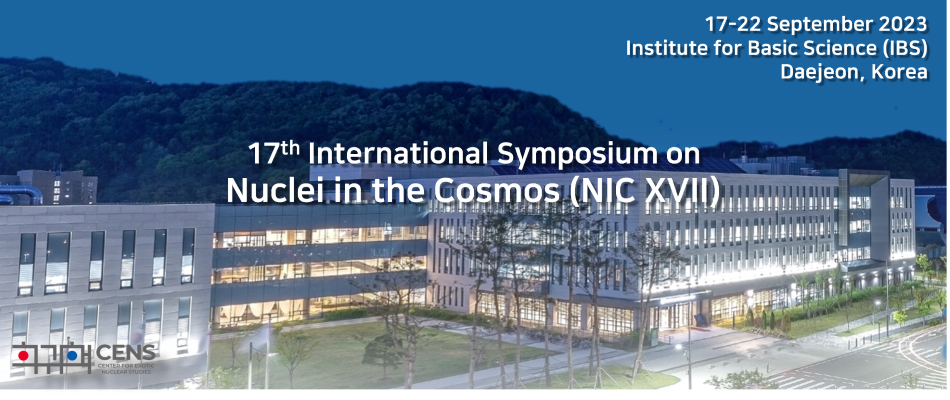Speaker
Description
Bound-state $\beta$-decay ($\beta_b^-$-decay) is a radically transformative decay mode that can change the stability of a nucleus and generate temperature- and density-dependent decay rates. In this decay mode the $\beta$-electron is created directly in a bound atomic orbital of the daughter nucleus instead of being emitted into the continuum, so the decay channel is only significant in almost fully stripped ions during extreme astrophysical conditions. The $\beta_b^-$-decay of $^{205}$Tl$^{81+}$ could influence our understanding of the production of $^{205}$Pb, a short-lived radioactive (SLR, 17.3 Myr) nucleus that is fully produced by the s-process in stars. In the context of the early Solar system, SLRs are defined by half-lives of 0.1-100 My and their abundance in meteorites can be used to constrain the formation of the Solar System [1]. Historically, it has been noted that thermal population of the 2.3 keV state of $^{205}$Pb in stellar conditions could dramatically reduce the abundance of s-process $^{205}$Pb by speeding up the EC-decay to $^{205}$Tl. This destruction of $^{205}$Pb is potentially balanced by the $\beta_b^-$-decay of $^{205}$Tl$^{81+}$ [2]. Currently, a theoretical prediction for the half-life of fully stripped $^{205}$Tl is used in stellar models, but given the importance of the $^{205}$Pb/$^{204}$Pb chronometer, a measurement of the $\beta_b^-$-decay for $^{205}$Tl$^{81+}$ was conducted at the GSI Heavy Ion Facility in March 2020. A $^{205}$Tl$^{81+}$ beam was stored in the Experimental Storage Ring, and the growth of $^{205}$Pb$^{81+}$ daughters with storage time was directly attributable to the $\beta^-_b$-decay channel. We will report the measured half-life and detail how this half-life can be used to more accurately predict the $^{205}$Pb abundance in the early Solar System.
[1] M. Lugaro, et al. Progress in Particle and Nuclear Physics, 102:1–47, 2018.
[2] K. Yokoi, et al. Astronomy and Astrophysics, 145:339–346, 1985.

